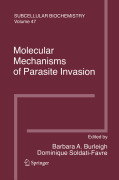
All of the parasitic organisms highlighted in this new book represent medically important human pathogens that contribute significantly to the global burden of disease. As such there is intense interest in understanding the molecularbasis of infection by these pathogens - not only with regard to their clinical relevance but also the fascinating biology they reveal. For most of the parasites discussed here the ability to penetrate biological barriers and/or to establish intracellular residence is critical to survival of the pathogen in themammalian hosts. For other parasites, a tissue invasive phenotype is a key virulence determinant. In the ensuing 18 chapters, select members of this diverse set of protozoan parasites, as well as some examples of the extremely reduced fungal parasites classified as Microsporidia, are discussed within the context of the fascinating molecular strategies employed by these organisms to migrate across biological barriers and to establish residence within target host cells. INDICE: From the contents I. Tools and Experimental Approaches.- II. Receptor-Ligand Interaction.- III. Signaling Pathways.- IV. Actin Dynamics: Host and Parasite.- V. Proteases.- VI. The Parasitophorous Vacuole.- VII. PenetratingBiological Barriers.
- ISBN: 978-0-387-78266-9
- Editorial: Springer
- Encuadernacion: Cartoné
- Páginas: 255
- Fecha Publicación: 01/05/2008
- Nº Volúmenes: 1
- Idioma: Inglés
